Early Clues About the Original Design Uncovered
What was the original design of the Rosicrucian tomb?
It is one of the most powerful symbols of the Rosicrucian tradition, the Fama describes its design well-enough and there is ample room enough for various extrapolations, as we have seen within several manifestations of the Rosicrucian Order.
The Golden Dawn has produced one of the best designs and yet it diverges from the Fama description on several points. But what if there was an ‘original’ design of the Rosicrucian tomb?
That is something that I’ve asked a few times, which led to this article.
In fact I do believe there was an original design, and this article will provide the keys.
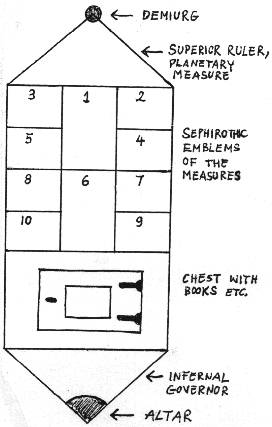
Rafal T. Prinke laid the foundation for my conclusion. He began digging into a similar enquiry in his article ‘The Great Work in the Theatre of the World.’ There he provided a wall design that not only fits the description in the Fama but also drew its structure from Fludd.
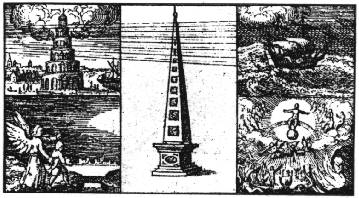
As Mr Prinke pointed out the brief description of the vault walls in the Fama may have applied the diagram from the cover of Fludd’s ‘Ars Memoriae’ which has five squares. Fludd is said to have been an early Rosicrucian and taught that in the art of memory groups of five images were easiest to memorize. He points out that Adam McLean suggested there may have been two groups of five for each wall. The higher set of five relate celestial wisdom and the lower set of five terrestrial.
Now look at the diagram below. I also encountered this through the same article.
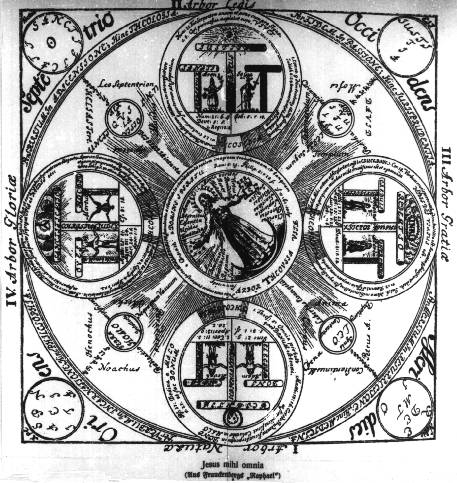
The diagram comes from Abraham von Frankenberg, a Pansophic Rosicrucian and student of Jacob Boehme, as presented in his alchemical healing manual titled ‘Raphael Artz Angel’. As Rafal T. Prinke points out it has elements that correspond to altar described in the Fama.
The title of the whole diagram is ‘Jesus mihi omnia’ which although is not on the design itself we find it in the Fama ‘around the circle of brim.’ The four sentences ‘A vacuum exists nowhere,’ ‘The Yoke of the Law,’ ‘The Liberty of the Gospel’ and the ‘Entire Glory of God’ appear on the arms of the central cross, which seems to be glowing. Between the arms of that cross there are four big circles with three Tau-crosses and two human figures in each quarter, which ‘may be taken to represent petals and thus completing a schematic Rosy Cross symbol together with the central circle.’
What Mr Prinke essentially reveals is that von Frankenburg had an early design from the Rosicrucian tomb. We know his Pansophic Circle was active in the 1650’s which make it a valuable piece.
Now for my own addition to that brilliant research:
The diagrams below are from Fludd’s ‘Fortress of Healing.’ A careful examination reveals that Frankenberg’s altar of C.R.C is also based upon Fludd’s diagram! Urszula Szulakowska wrote an article titled ‘The Paracelsian medicine and theosophy of Abraham von Frankenberg and Robert Fludd’ which explores this connection in more detail. She concludes that Frankenberg’s healing method was also directly influenced by Fludd, and in my opinion represents a Rosicrucian transmission.

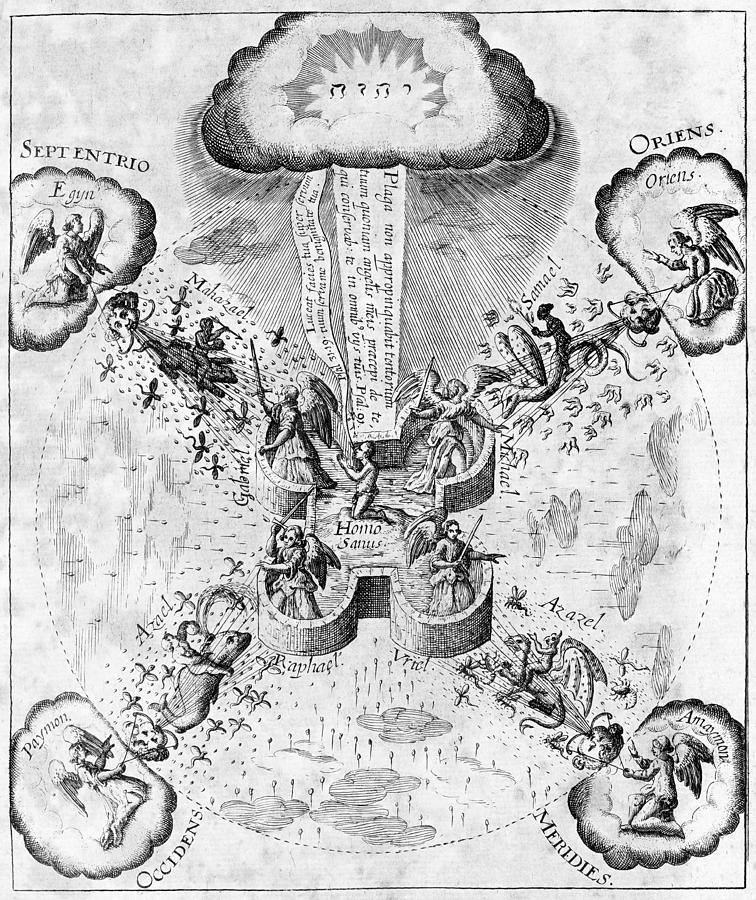
Fludd’s images describe in inner harmony of health through the metaphor of a fortress. The healthy person is symbolized by the first fortress which has pure elements on the four winds. The fortress under attack shows how disease infects the body. Notice that Oriens, Septentrio, Occidens and Meridies are named at the angles of both Fludd’s diagrams as well as Frankenburg’s.
More importantly the towers in Fludd’s diagrams become the triple T (Tau) crosses in Frankenberg’s which is also occupied by human figures. In the fortress of health they are fighting off the negative forces of illness, and in the altar piece you can see a sword as well. Frankenberg’s is centralized by a Christ figure, which corresponds to Christ as the ultimate healer in his Raphael system, whereas Fludd’s reveals that a person must pray from inside the fortress to drive sickness away.
I’ve been keeping this baby up my sleeve for a while now, so remember you saw it here first. 🙂
There are several practical applications which I’d like to go further into in future.
The essential takeaway however is: both the walls and altar of the Rosicrucian tomb are drawn after designs from Robert Fludd. Therefore we may conclude that Fludd holds the key to the original tomb of Christian Rosenkreuz, not so far as an actual worldly structure, but rather we now are one step closer to the original design the manifesto writers had in mind.
This perhaps changes things and hints at the design my own Pansophic Order has taken. In future I MIGHT publish those designs if there is enough interest.
Wishing you all the best, Samuel Robinson.
Return HOME here.


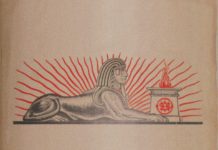
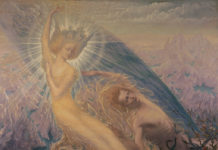






Nice, thank you